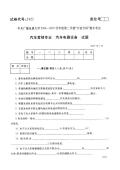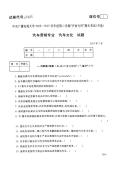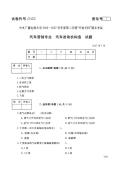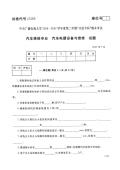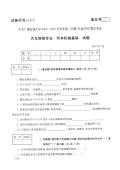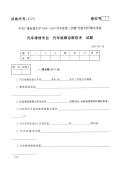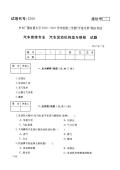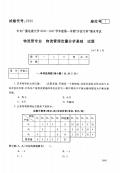国家开放大学:2006—2007学年第二学期“开放专科”汽车营销专业汽车电器设备期末试题(7月)
文件格式: PDF大小: 204.71KB页数: 6
国家开放大学:2006—2007学年第二学期“开放专科”汽车营销专业汽车文化期末试题(开卷)
文件格式: PDF大小: 286.16KB页数: 7
国家开放大学:2006—2007学年第二学期“开放专科”汽车营销专业汽车发动机构造期末试题(7月)
文件格式: PDF大小: 263.36KB页数: 8
国家开放大学:2006—2007学年第二学期“开放专科”汽车维修专业汽车电工电子基础及电路分析期末试题(7月)
文件格式: PDF大小: 148.91KB页数: 6
国家开放大学:2006—2007学年第二学期“开放专科”汽车维修专业汽车电器设备与维修期末试题(7月)
文件格式: PDF大小: 227.12KB页数: 7
国家开放大学:2006—2007学年第二学期“开放专科”汽车维修专业汽车机械基础期末试题(7月)
文件格式: PDF大小: 200.19KB页数: 8
国家开放大学:2006—2007学年第二学期“开放专科”汽车维修专业汽车故障诊断技术期末试题(7月)
文件格式: PDF大小: 164.07KB页数: 6
国家开放大学:2006—2007学年第二学期“开放专科”汽车维修专业汽车发动机构造与维修期末试题(7月)
文件格式: PDF大小: 268.42KB页数: 8
国家开放大学:2006—2007学年第一学期“开放专科”物流管理专业物流管理定量分析基础期末试题(1月)
文件格式: PDF大小: 213.7KB页数: 8
国家开放大学:2006—2007学年第一学期“开放专科”汽车营销专业汽车文化期末试题(开卷)
文件格式: PDF大小: 296.68KB页数: 7

